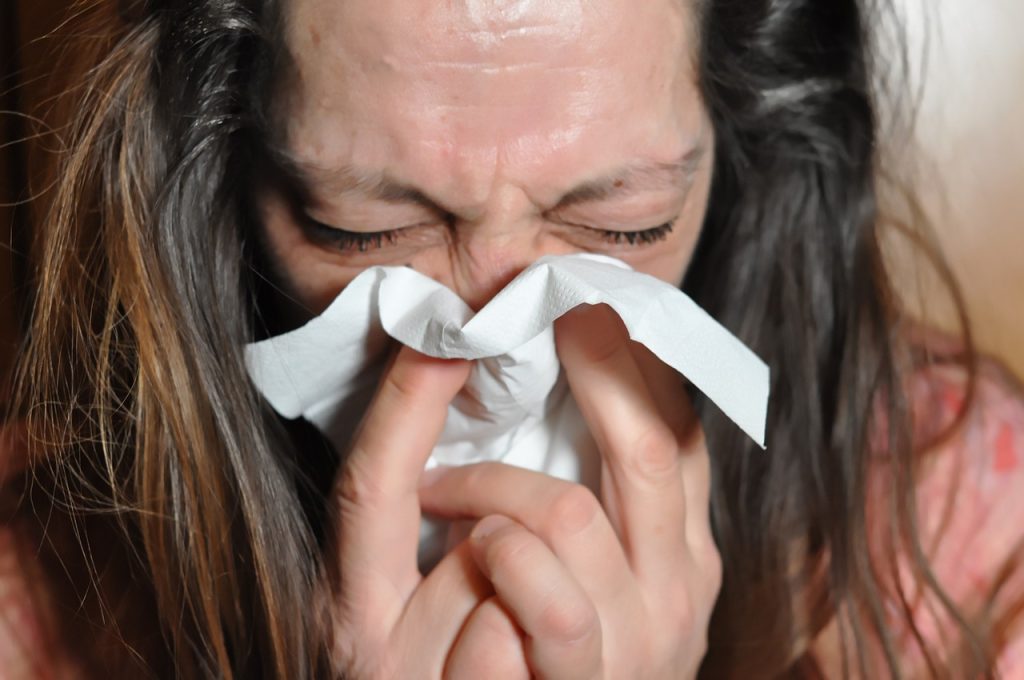The common cold is a contagious upper respiratory infection that is usually not serious but can still be dangerous for people with weakened immune systems. It can even develop into a life-threatening illness like pneumonia or bronchitis. Adults suffer from about two to four colds yearly, whereas kids get as many as six to eight. Colds can occur any time of the year yet, but there are ways to encourage a stronger immune system and better overall health!
What Causes the Common Cold?
Common colds are caused by over 200 different viruses, the same pathogens responsible for many other respiratory diseases. The most common infections stem from rhinovirus, coronavirus, RSV, and parainfluenza.
Rhinoviruses cause the most common colds during the year. They rarely make you severely sick but can still worsen asthma and cause the development of sinusitis and acute viral otitis media.
Coronavirus, RSV, and parainfluenza infections may also lead to common colds and progress to more severe illnesses, especially in young children. They are more prone to colds since they’re more likely to touch their mouth, eyes, and nose without proper hand washing.
Children of all ages are at a greater risk for this illness as their immune systems are not yet as strong as that of adults. Although infections happen during the cold season, the cold weather is not directly the reason for the development of this illness. Rather, it stems from (a) spending more time indoors, in closer proximity to others, thus making it easier for germs to spread, and (b) your body not being able to fight off germs as effectively as it normally does.
Thus, viruses reproduce and thrive easily in colder temperatures, speeding up the transmission rate and infecting more people, particularly those in indoor spaces.

How to Avoid Getting a Cold
Colds spread through physical contact or inhalation. Infected individuals spray droplets into the air by talking, coughing, or sneezing. Once in the air, the virus enters our bodies through the nose, mouth, or eyes, making us sick.
The virus can also be transferred by touch. For example, when someone at home has a cold, you’re more likely to get infected by touching doorknobs and sharing utensils with that person. You might also catch a cold if you touch your face after direct contact with them or contaminated objects.
Our immune system is our first line of defense against the common cold. Unfortunately, there is no vaccine for the common cold, but there are ways to reduce our chances of getting it. Start with eating balanced meals, moving your body, getting enough sleep, and learning how to cope with stress. These four factors are paramount and allow your body to do its job properly.
Wash your hands thoroughly for around 20 seconds before touching your face. Moreover, disinfect the surfaces and objects you frequently touch. If you’re in a public space and cannot avoid high-touch surfaces, clean your hands with soap and water when you can.

While hand washing is the best method to keep the germs away, hand sanitizer with 60% to 95% alcohol will do when you’re out and about. In addition, it’s essential to practice good sneezing and coughing etiquette. When you feel like sneezing, and there are other people around, keep your distance and use a tissue to cover your mouth. Or, you can sneeze or cough into your elbow.
Avoid close contact with others who are sick or with those who have been exposed to the virus. Consequently, if you’re not feeling well, protect others by staying home.
Common Cold Symptoms
Common cold symptoms typically appear two to three days after exposure to the virus and last for up to 10 to 14 days. They include:
- Runny nose
- Itchy throat
- Watery eyes
- Mild coughs
- Low-grade fever
- Sneezing
- Loss of taste and smell
- Nasal congestion
- Mild fatigue
- Headache
- Fatigue
- Body aches
- Chest discomfort
These symptoms look very similar to many respiratory infections, including influenza. One of the key differences is that adults suffering from the common cold rarely experience fever. Children, meanwhile, sometimes do, and most of the time it happens during the first three days of infection.
People struggling with colds may feel body and muscle aches, but this symptom is more common with the flu. Furthermore, colds produce mucus, so an infected person with a dry cough is most likely infected with the flu. In the end, both illnesses can weaken your immune system and lead to complications.
What to Do if You Get It
The common cold usually gets better on its own after around two weeks. While over-the-counter medicines can help make you feel better, they’re not considered a cure. Hydration and rest are the keys to a fast recovery.

If your symptoms worsen after five days, you should see a doctor. Seek medical attention if you experience shortness of breath, wheezing, a severe headache, and a fever lasting over three days.
Lack of appetite, ear pain, and rising fever for more than two days can also be signs of complications for children. If you are immunocompromised or worried about your condition, reach out to a healthcare provider as early as possible.
Protect Yourself and the People Around You
We can catch colds anytime, but some people are more prone to this illness than others. So, immunocompromised or not, take care of yourself. Stick to healthy habits to fight viruses during all seasons (not just the winter!) and take precautionary measures to prevent infections from occurring in the first place.
If you liked this blog, you might enjoy my winter wellness guide.













